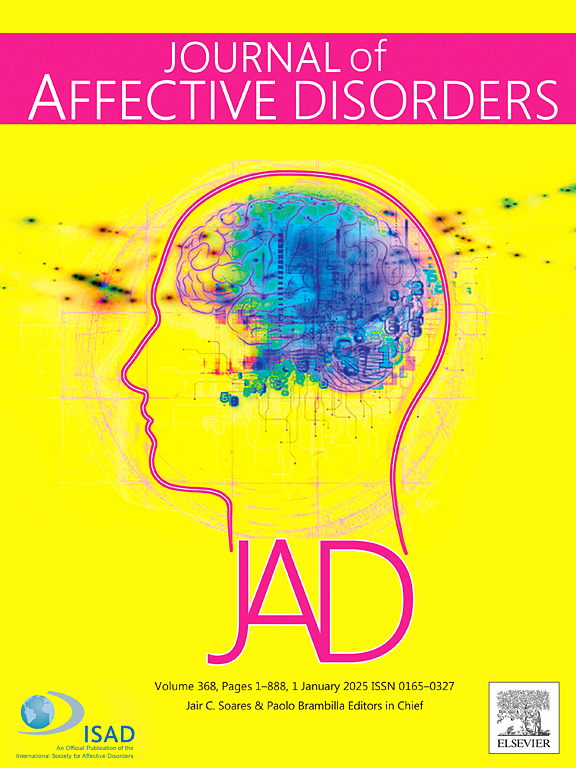Association between RAR and the prevalence and prognosis of depression: A population-based study
IF 4.9
2区 医学
Q1 CLINICAL NEUROLOGY
引用次数: 0
Abstract
Background
Depression has become a significant public health issue. The red blood cell distribution width to albumin ratio (RAR) is regarded as a reliable marker of inflammation and nutritional status, yet the association between them remains unknown. Therefore, this study aims to evaluate the association between RAR and depression.
Methods
28,737 participants were included in the National Health and Nutrition Examination Survey 2005–2018. The weighted multivariate logistic regression and Cox regression explored the relationship between RAR and the prevalence and mortality of depression. Restricted cubic spline (RCS) detected nonlinear relationships and threshold effects. The stratified analysis explored potential interaction variables.
Results
In the cross-sectional study, 2519 participants (7.67 %) had depression. Weighted multivariate logistic regression showed RAR was independently associated depression (OR = 1.26, 95 % CI = 1.12, 1.42, P < 0.001). In the cohort study, there were 301 cases of all-cause mortality (9.94 %) in depression population, including 77 cases of cardiovascular mortality (2.66 %). Weighted multivariate Cox regression analysis presented that RAR was related to higher all-cause mortality (HR = 1.98, 95 % CI = 1.62, 2.42, P < 0.001) and cardiovascular mortality (HR = 1.73, 95 % CI = 1.19, 2.51, P = 0.004) in the depression population. Subgroup analysis showed that RAR was consistently related to the prevalence and mortality of depression across all subgroups (all P < 0.05). RCS revealed that the relationship between RAR and depression was nonlinear (P for nonlinear = 0.011), while the association between RAR and all-cause mortality was linear (P for nonlinear = 0.245).
Conclusions
RAR is significantly associated with the prevalence and prognosis of depression. Nevertheless, more investigation is required to elucidate the underlying processes.
求助全文
约1分钟内获得全文
求助全文
来源期刊

Journal of affective disorders
医学-精神病学
CiteScore
10.90
自引率
6.10%
发文量
1319
审稿时长
9.3 weeks
期刊介绍:
The Journal of Affective Disorders publishes papers concerned with affective disorders in the widest sense: depression, mania, mood spectrum, emotions and personality, anxiety and stress. It is interdisciplinary and aims to bring together different approaches for a diverse readership. Top quality papers will be accepted dealing with any aspect of affective disorders, including neuroimaging, cognitive neurosciences, genetics, molecular biology, experimental and clinical neurosciences, pharmacology, neuroimmunoendocrinology, intervention and treatment trials.
 求助内容:
求助内容: 应助结果提醒方式:
应助结果提醒方式:


